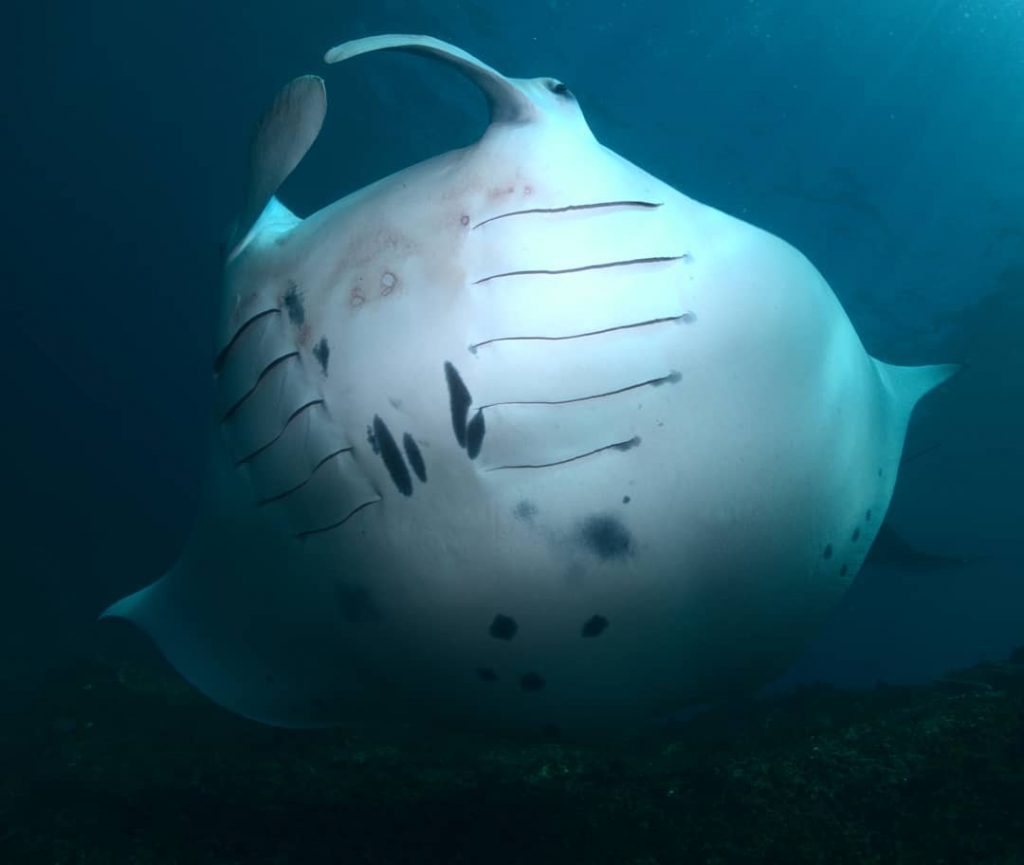For a memorable underwater experience, diving with manta ray is something that almost every diver dreams about. To be in the tranquil scenery where a gigantic Manta Ray passing gracefully, gently flaps its wing-like fins, conjuring images of underwater ballet. Bali’s sister island, the laid-back Nusa Penida is one of the best place to swim with these gentle giants. The Manta Point in Nusa Penida is a heaven and safe zone for these protected fish.

Dangers Beyond the Safety of Manta Point Nusa Penida
Manta Ray was not always this lucky. Just about 6 years ago, they were hunted everywhere in Indonesian water, mainly in the southern part of the country where the lands are mostly barren and the people depend on the sea. Manta ray was common in the dinner table of Solok and many other coastal villages of eastern Indonesia—who enjoyed the winged fish as their traditional foods. Fisherman used hunt the manta ray as one single manta would give them three million rupiahs (USD $212). The fishing increased ever since Chinese markets begun to show interest on manta’s gills as alternative medicine even though no study has ever prove it. A single gill would be sold around 150.000 rupiah per kilogram, and that’s enough to push the manta fishing, pushing it beyond customary limits. Fishermans would prioritise Manta Ray over other fishes and as a result, the animal was quickly facing an extinction.
Manta Protections
Indonesia started to impose ban on manta ray fishing as the population was rapidly decreasing. Female manta rays can only give birth to one or two pups every two to five years while the the fisherman could catch hundreds every year. If this continue, soon there will be no manta ray around in Indonesia water. Meanwhile, the diving tourism industry were showing a growing interest in manta ray as one of the most-seek animal by divers. The Manta Point in Nusa Penida was one of the leading region in Indonesia to locally protect Manta Ray. Tour operators and fisherman were given education about the Manta and it results on more sighting of this majestic animals. In 2014, the government finally impose Manta Ray bans and set up daily patrols on Manta-dense regions to ensure that there’s no more manta hunts.
More Diving and Travelling Stories:
Travel Destinations – Best Diving Sites in Indonesia
Benefits of Scuba Diving You May Have Never Been Told
Hunting Manta at Manta Point Nusa Penida

Today, Indonesia become the world’s largest manta ray sanctuary as the country pledges to protect all manta rays within its 6 million kilometres of its exclusive economic zone. The decisions was influenced by a study that estimate that living manta ray, as ecotourism objects, could contribute at least 12 billion rupiahs over its life time. To compare, a single manta ray would be sold around three to six million rupiahs. A living manta a worth at least 400,000 more when let alive in conservation. From economical viewpoint, that’s an easy decision. The Manta Point at Nusa Penida alone house more than 600 manta ray individuals on its water. It serves as a critical habitat for this “Vulnerable to Extinction” animal and is planning to continue to do so. Today, divers and all marine enthusiast could enjoy watching manta ray as they thrive on a better life. Hunting manta in Manta Point Nusa Penida today is a totally fun and friendly activity—no manta is left harmed.